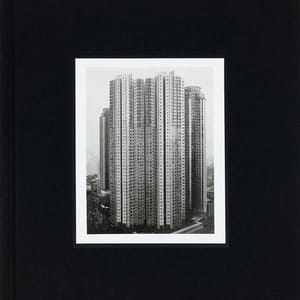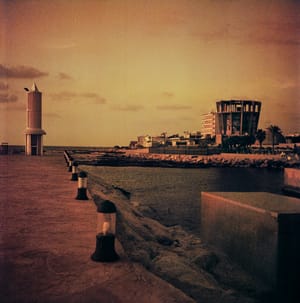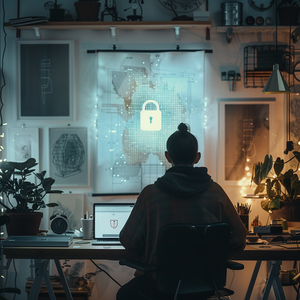Explore the fascinating world of Daniel Bushaway, an Australian photographer renowned for his insightful exploration of man-altered landscapes. In this comprehensive feature, we delve into Bushaway's journey from his initial forays into photography to his profound projects like 'Paper,' which documents the intricate transformation of wood into paper. Discover how his work, balancing between art and documentary, sheds light on the environmental and political nuances of the paper industry, challenging us to rethink our everyday consumption habits. Join us as we uncover the meticulous process and creative vision behind Bushaway's impactful imagery.

Following his attraction toward man-altered landscapes, Australian photographer and filmmaker Daniel Bushaway captures our world as it changes shape. His latest project examines the production of paper, showing the transformation that wood goes through to become an object on our desks and shelves. We spoke to Daniel about Paper and the creative process behind this project.
Hi Daniel, when did you start taking photos? What is your background?
When I was 16 I started taking photos. My Grandfather gifted me a camera an Olympus Trip 35mm, so I was taking holiday snaps as everyone does, nothing special. It wasn’t a lightbulb moment, it was just taking photos but it never stopped.
I traveled around a bit and lived in Spain as a child, being given a camera seemed a natural way to capture memories. I studied graphic design and when I got to the end of my degree, I realized I had basically spent all my time taking photos, processing, and printing in the darkroom. I forgot that I was studying graphic design most of the time, it was a good outlet and a form of escapism for me.
Is there a project that marked the transition from amateur to professional photographer? A body of work that pushed your career forward? Could you tell us about it?
The project titled ‘Control’ was a marked transition for me. It was obsessive, visiting locations around Tasmania, Australia, and Andalucia in Spain and shooting locations on 35mm. Over the years from 2007 - 2013 I revisited each location to shoot on large format, which was physically and technically difficult because of the nature of shooting on large format in hot climates. They were not simple setups, shooting this way slows down the process but the resolution is what I was after. The textural nature of the project was what I needed to capture. It pushed me forward from a technical aspect, each shot had to be technically perfect and disciplined. It also solidified my process of shooting predominately on large format. ‘Control’ was also the first public solo show that I curated.
At the time I was reading a book about Stephen Shore, an American photographer, who spent much of his career retracing his footsteps across America reshooting on a large format camera. Moving from smaller formats to a large format changed the work, I found this process fascinating.
Tell us about Paper. How did this idea come about? And how long did it take to complete?
Spending many years working as a graphic designer is the culprit for my interest in paper.
My love of specifying paper stocks for a multitude of design projects had bleed into my developing photographic practice, with an in-depth inquiry into the value and purpose of paper.
Coupled with an interest in sustainability and environment lead me to obvious topics for exploration such as water, paper, oil, consumerism and the impact of human endeavor on our landscape. I initiated conversations with key paper industry protagonists in Australia, Europe, and the US and then I made the leap to work engulfed by research, planning, bureaucracy, seeking permission and the occupational health and safety involved to shoot at these locations.
It has taken about 6 years to complete the book ready version of the project, starting back in 2012 with a conversation with a printer about where they acquire the majority of their stock.









© Daniel Bushaway
Today we tend to think about sustainability in relation to plastics and carbon emission. Paper seems to be a lesser evil. In the introduction to your project, you say that the [paper] industry is “inherently politically charged with ideas of conservation and sustainability”. What do you mean exactly? What is the political message behind this project?
The message behind the project is really about creating awareness about responsible consumption and where our products come from. In our current economic climate, any conversation around the environment is politically divisive; deforestation, plantations, and related consumer products being one. I prefer my image making to tell the story and my aim is to provide a straightforward and accurate representation of the paper industry.
In Australia paper is a major industry, with a large portion of its raw material being a bi-product of sawn timber for use in construction timber, and the pre-fabrication industry. There are a handful of major companies running about 20 mills nationally producing a broad spectrum of high volume commodity pulp, paperboard, and paper products. Almost all specialist paper we consume beyond this is largely imported via the US, Europe, and S.E. Asia to a couple of paper merchants.
Australia has a large export of sawn log and as a result, we have seen multiple attempts to restructure the industry to determine what forest should be open or closed for logging, we see this specifically within the state of Tasmania. Government legislation mandates by law, a minimum requirement for supply of sawlogs per year, and when State or private forestry management are unable to deliver minimum requirements, previously closed forests would be open for logging – which is essentially all of the protected forests not covered by world heritage listing.
Although we have seen a slow shift in recent years towards plantation based production we still see multiple attempts to declassify Tasmanian UNESCO world heritage sites to help increase production or as some might see it, an otherwise diminishing national logging industry. This is met with multiple environmental arguments about logging native forest and is seemingly in a state of continuous flux.

A book version of Paper is about to be published, which is quite ironic. Did you choose what paper to print it in? Is there a paradox to be read?
Ha, that’s an interesting question. I don’t think the subject matter and it is printed as a book is particularly related, the idea and how it is communicated are separate. The project is about documenting a commodity and its lifecycle, happenstance it’s about paper. Photographers and artists inherently produce physical bodies of work.
It’s the natural progressional arc of this paper project and I think it’s important to archive this body of work so far. The project being printed in a book is not the full stop, it’s the next step in the process. Even shooting on large format, it’s about slowing down the steps, creating a book, reading it as a book, it forces you to slow down, view and consume the content in a more considered way. It forces the viewer to slow down, hopefully evoking an organic and tactile response to the work.
This will be the 1st published book I have produced on any of my photographic works and it’ll be printed on archival paper stock.

Your previous project Polyethylene captures the life cycle of this material in a similar manner. Many of your other series focus on inanimate objects. You seem to capture the transformation of subjects usually considered lifeless. How do you choose your subjects? Could you talk us through your creative process?
Many of my projects focus on the banal, I find infrastructure, landscapes and how they intersect fascinating, I guess there’s a little bit of my dad's engineering analytics buried deep inside me.
I always aim to search for a topic that has not been investigated thoroughly, so this process at the start can be extremely broad. It’s pretty hard these days to reinvent the wheel so I challenge myself to find subjects that I am able to reframe and capture in a different way. My searches are always specific to human endeavor on a large scale. There is a level of research and conceptual development on all projects before I start shooting. I also often find that the path a project has taken often evolves into something quite different with unexpected results.
It’s no different with the Paper project, asking myself why I should commence a project like this, connecting and questioning where our everyday objects come from, the huge machines that aid and facilitate some of the more arbitrary tasks we complete and how all the different points within this lifecycle are connected and impact us.
Paper and your previous projects have a strong documentary element to them, but at the same time they could be considered conceptual, artistic bodies of work. Where do you draw the line between documentary and art photography? Do these labels mean anything to you?
I don’t intentionally subscribe or gravitate to either and don’t really label my work in one way or the other. I am flattered if my audience interprets and categorizes my work differently. I personally don’t think it's my place to categorize my own work, it’s up to you to work out what the message is and what you get out of the work. I shoot what I want to shoot and what I want to see, so I don’t intentionally force work based on categories. I’ll leave this up to the viewer.


© Daniel Bushaway
Who are your inspirations? Who do you look up to in photography?
I take inspiration from my partner, friends, family, peers, colleagues and very broadly art, culture and life experiences. My first introduction to photography was with The New Topographic Movement and The Dusseldorf School of Photography which still informs much of my photographic practice today. I look up to photographers like Irvin Penn, Joel Sternfeld, Inez Van Lamsweerde, Thomas Struth and more locally Derek Henderson, Fiona Pardington and Bill Henson.
A technical question: what do you shoot with? What is your kit of choice for still life projects?
I shoot the majority of my work on large format and use two camera bodies made by Chamonix and Toyo both have slightly different features but the Chamonix body has complete tilt-shift capabilities so I often use that. I use a 150mm, a 180mm, and a 300mm lens. For work the requires a bit more agility I have a Mamiya 7 medium format camera with just a 90mm lens. I use a Sekonic spot meter and have a mix of Gitzo and Arca Swiss tripods and heads. I used a Canon 5DIII for work that requires planning and site visits, the paper project being a prime example of requiring pre-film shoot site visits and planning. When it comes to shooting on large format you have just one chance to get the shot which is why planning is needed. For still life projects in studio environments, I’ll typically use the Chamonix body with the 180mm lens. I only use Kodak Portra 160 or 400.
After the publication of Paper, will you start working on another similar project? What is next for you?
One of the first things I will be looking at is book marketing and a launch show in 2020. I will channel some interest into the timber industry, although I have found a little resistance and caution so far within this industry. So watch this space.
I tend to overlap or stagger work so am already working on the what’s next which is starting to look different aesthetically from my current work, I am tackling something more abstract and directly relatable to myself, quite a personal project, I’m not quite sure where it will lead yet.






